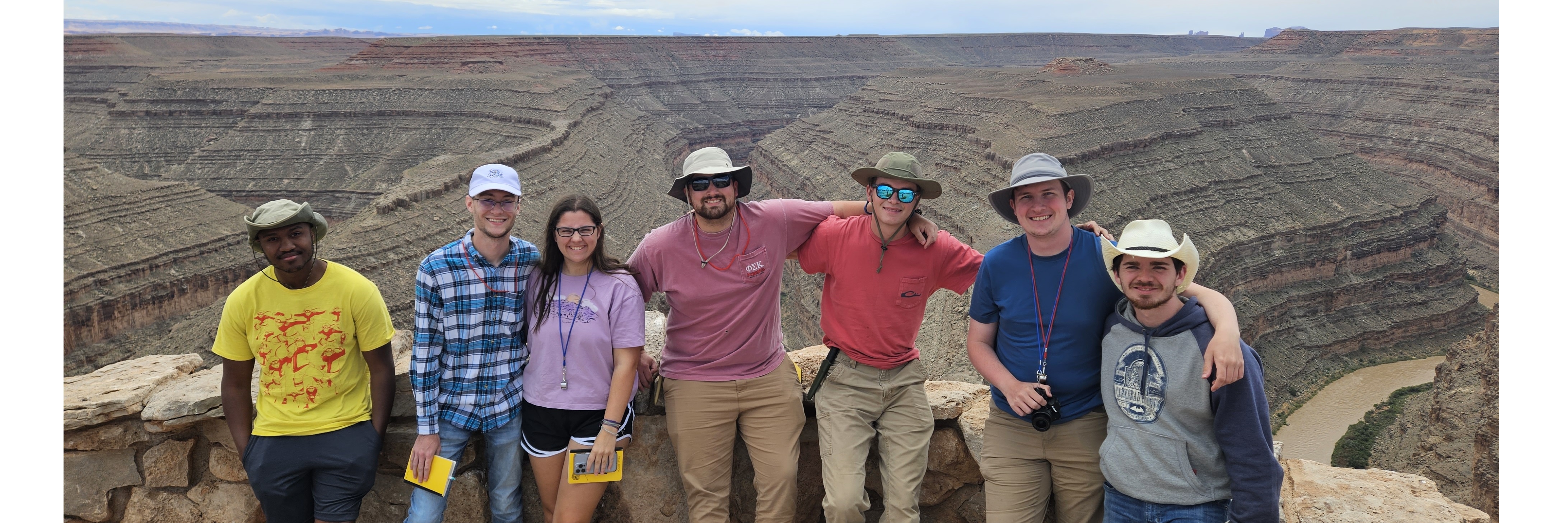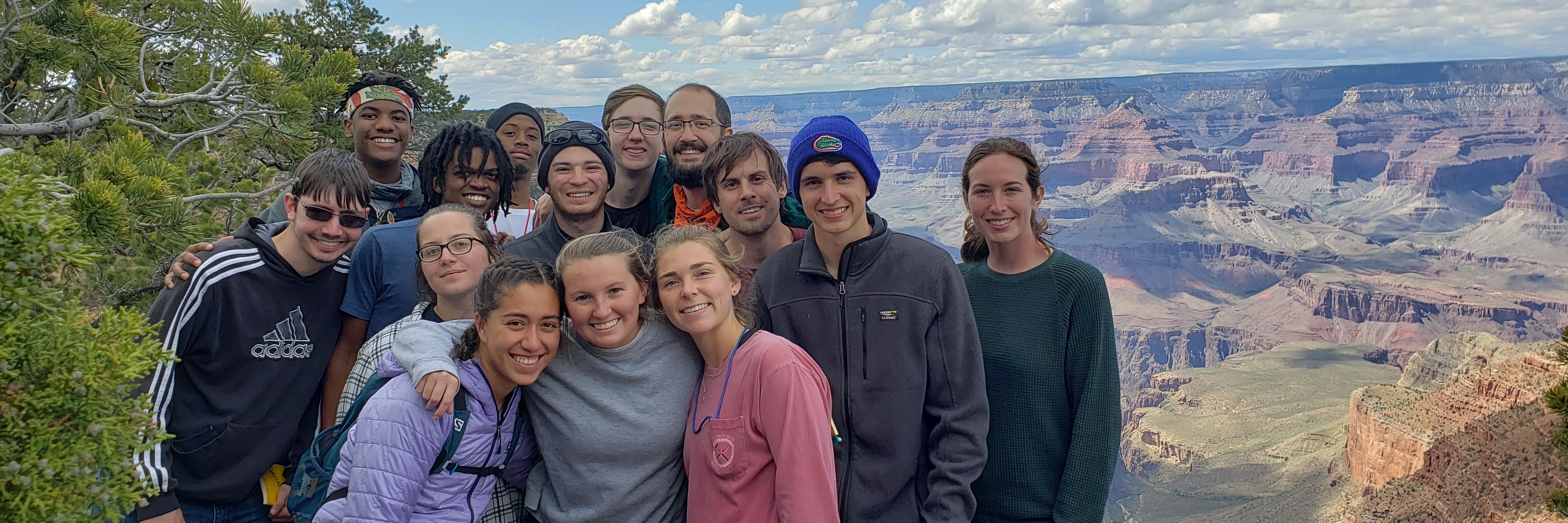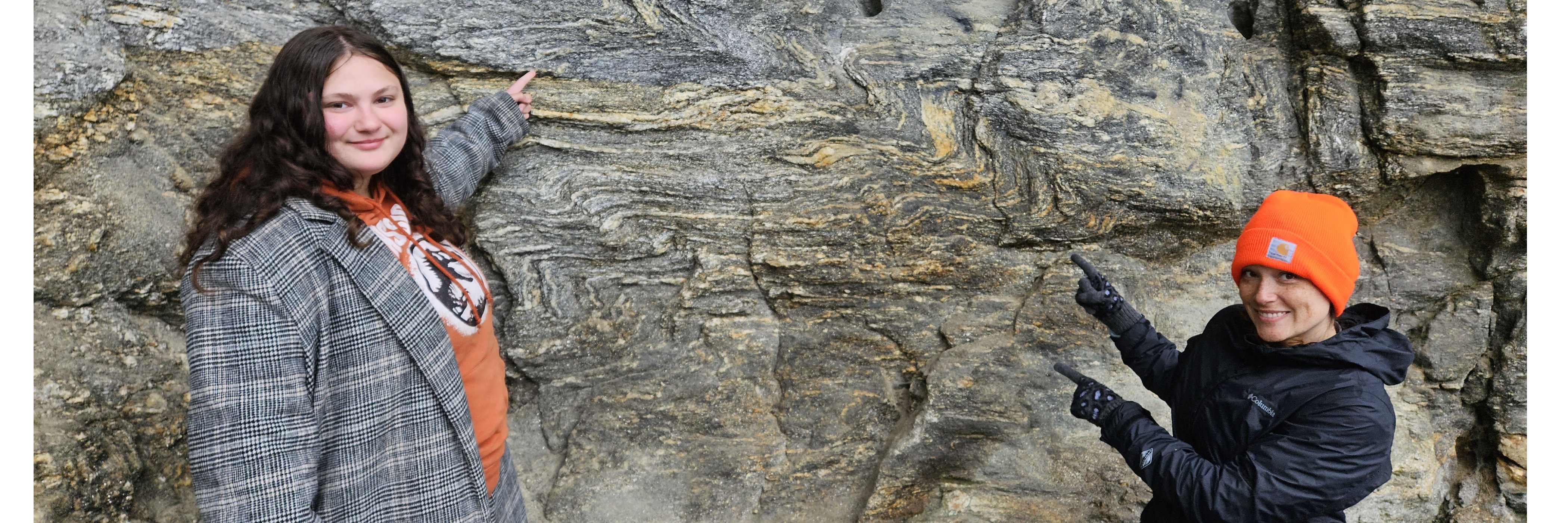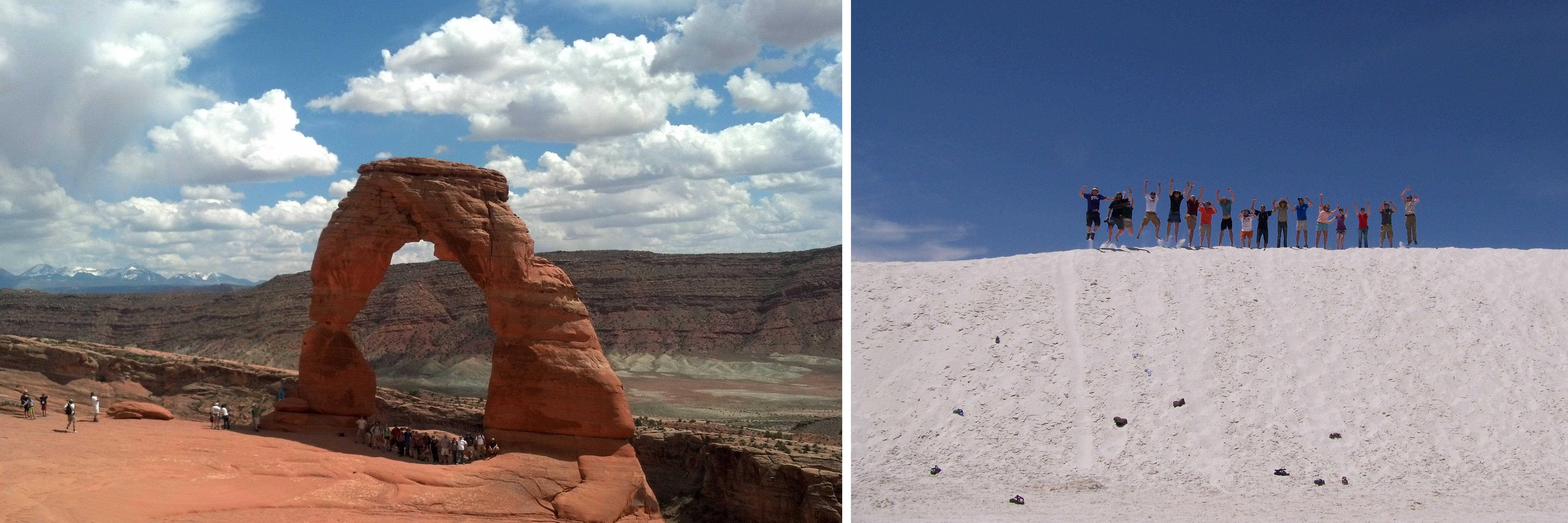Degree Options
Environmental Geosciences
VSU offers three Environmental Geosciences options that align with student interests and the most popular career fields. Choose the one that interests you the most. Environmental Geosciences is a rapidly growing field with job openings in a variety of careers government, industry, and education. Environmental geoscientists are employed as:
| Environmental Analysts | Meteorologists | Hydrologists |
| Map Makers | Petroleum Geologists | Image Analysts |
| Land Use Specialists | Paleontologists | Conservationists |
| Urban/rural Planners | Seismologists | Location Analysts |
| Travel Consultants | Emergency Planners | Intelligence Officers |
| Teachers | Resource Managers | Park Rangers |
If you would like to see a sample of other careers open to geoscientists, visit the American Geological Institute's Career Page.
VSU offers many ways for you to specialize in the field of Environmental Geosciences that interests you the most. We offer degree options in
- Geology
- Geography
- Environmental Sustainability
- Environmental and Climate Sciences
- Natural Hazard Management
- Geospatial Technology and Urban Planning.
You can also earn a minor in Environmental Geosciences with a focus on Geology or Geography.
Geology
Geology is the study of Earth’s materials, their composition, how they change over long spans of time, and ways that humans utilize natural resources. Understanding geology helps us better care for the Earth’s resources and our environment. Geologists also learn about the structure and composition of other planets. Students use a number of facilities that enhance classroom study, including the Geosciences Fossil Lab, which features hundreds of animal and plant fossils. Students also study our extensive mineral and rock collection. Other unique facilities available include a rock preparation room and student research station.
Students develop skills in fieldwork, computer mapping and geographic information systems and learn about climate, landforms, water resources and environmental policy. The curriculum is designed to equip students with the knowledge and skills required to analyze environmental questions and devise solutions.
Field work and hands-on experiences are a major part of our program, as the video below demonstrates.
Four-Year Program Map for Geology Option
Geography
Environmental Geography forms a critical juncture between the natural and social sciences, exploring interactions between people and their environment. This program seeks to provide students with the knowledge and skills required to analyze environmental questions and to recommend solutions. Students majoring in Environmental Geography develop skills in field work, computer mapping and geographic information systems (GIS), and gain knowledge on climate, landforms, water resources, and environmental policy. Environmental geographers are well positioned in a society in which the environment has become a priority of many businesses and government agencies. Graduates may work in a variety of fields including environmental consulting or management, map production, spatial database management, education, or regional planning.
Four-Year Program Map for Geography Option
Environmental Sustainability
The Earth is a finite place, with limited amounts of land, water, and other resources. Environmental sustainability refers to the responsible use and conservation of natural resources to ensure their availability for current and future generations. The environmental sustainability track prepares students to understand, analyze, and solve environmental and sustainability problems by providing the skills and knowledge to address them. With growing awareness concerning issues of sustainability, degrees that support careers with an environmental focus are expected to be increasingly in demand. Graduates can seek advanced degrees or go on to a wide range of careers in the public and/or private sector and in non-governmental organizations.
Four-Year Program Map for Sustainability Option
Environmental and Climate Sciences
Humans are interconnected with the environment and nearly every human activity has some sort of influence on the environment. Changes to the climate and other environmental issues are among the most pressing concerns affecting current and future generations, and as such there is an urgency to address these matters. With the environmental and climate sciences track, students will gain the scientific understanding required to comprehend and assess topics that are critical to developing solutions to save our fragile planet. There is an increasing demand for individuals with the knowledge to address and mitigate the growing economic and societal impacts, and to communicate their findings with decision-makers across the public sector, private sector, and non-governmental organizations. Students successfully completing this degree can further their studies in related graduate programs. They will also be prepared to work for state or federal agencies or become employed in the private sector.
Natural Hazard Management
With rapidly changing environmental and climatic conditions, natural hazards are becoming more frequent and are expanding their impacts on regional, national, and international scales. Hazardous conditions associated with climate change, droughts, earthquakes, flooding, severe weather, heatwaves, and other natural hazards will continue to increase, and pose more risks to our society than at any other time in human history. Natural hazards are a ubiquitous problem in every region of our world, and there are urgent needs to manage (assessment and anticipatory planning) these conditions in all aspects of society. The natural hazard management track at Valdosta State University is one of the few such programs in the state of Georgia that provides students the opportunity to pursue a prominent career path in private and/or public sectors in the field of natural hazard management.
Geospatial Technology and Urban Planning
The fields of geospatial technology and urban planning present solutions to many of the urgent problems associated with environmental sustainability and regional planning. Geospatial technologies help to understand spaces, monitor changes and patterns in landscapes, urban areas, and even societies. Geospatial technology is important for urban planning as most planners use geographic information systems (GIS) and data analysis skills to address issues for government and professional agencies related to a diverse range of topics such as mapping land use, wildlife habitats, and public health. The geospatial technology and urban planning track at Valdosta State University combines cutting-edge technology with urban planning theories and practices to map, analyze, and improve the urban environment and address sustainability issues. Geospatial technology and urban planning have a growing job market with very competitive salaries. This track helps students to find careers in urban planning, geospatial technology, and resource management.
Minors in Environmental Geosciences
Students can minor in Geology and in Geography. Skills honed in these minors augment students’ preparation for employment in the public or private sector or pursuit of graduate education. Complete this form to declare a Minor in Geology or Geography.
Geology Minor
A Minor in Geology is available to students of all majors. This minor consists of two lower-level courses (GEOL 1121k and GEOL 1122k) as well as Mineralogy (GEOL 3101), Petrology (GEOL 3102) and at least three additional upper-division hours in geology. These courses teach a variety of analytic techniques both in the classroom and in the field.
Geography Minor
A Minor in Geography is available to students of all majors. This minor consists of two lower-level courses (GEOG 1112K Introduction to Weather and Climate and GEOG 1113K Introduction to Land Forms) and at least 9 hours of GEOG at the 3000-level or higher. These courses teach a variety of analytic techniques both in the classroom and in the field.
Geosciences
-
- Main Office: 3025 Bailey Science Center
kwinkelmann@valdosta.edu
- Main Office: 3025 Bailey Science Center
-
Mailing Address
1500 N. Patterson St.
Valdosta, GA 31698 - Phone: 229.333.5798





